Patterns
Notions
Gifts
Discovering Arctic Knitting with Annika Konttaniemi
March 30, 2023 6 min read 0 Comments

Joining us today is knitwear designer Annika Konttaniemi, Aninika lives and works in Lapland and is the author of Arctic Knitting. This recently published book features 20 knitting patterns inspired by Lapland's seasons. Discover Annika's inspiration and personal connection to Arctic knitting as we explore the world of this fascinating knitting tradition.
Thank you for joining us today Annika. Can you tell us a little about your knitting background?
Like many Finnish kids, I had a subject called handicrafts in school. There usually is a choice between woodwork and textile work. Back in the 90s, when I went to school, it was still very common for girls to choose textiles, and boys did woodwork, so I also learnt the craft in school. I found knitting challenging to learn, however and did not get excited about the craft then. In fact, I hated it! I did not knit at all for an entire decade.
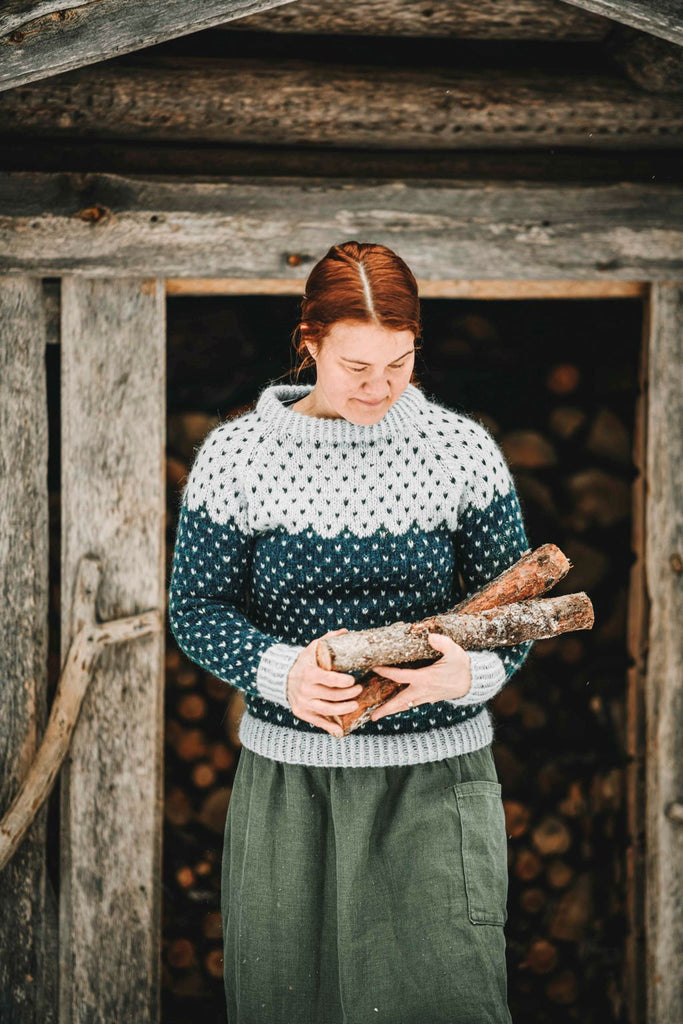
Kinos by Annika Konttaniemi
I started knitting again as an art student in my early twenties to make my own sweater. DIY was a massive part of my style back then, and of course, actually still is ;) Since then, I got swept up in Ravelry, knitting everything that looked challenging and difficult. Kaffe Fassett was a source of inspiration for me, and so was Norah Gaughan with her book Natural Knitting.
I wouldn't have gotten so interested in knitting if it was not for Ravelry, which came out right around this time. I became mesmerized by the newly developing online supply of astonishing patterns. I also joined a local stitch'n'bitch group in Rovaniemi, which was initiated by an Australian. I had just been on a student exchange to the USA and was excited to find an international knitting group in my home town. Some like-minded sisters joined us over the next few years, and 15 years later, we are still best friends!

In 2014-2017 I had a brief affair with hand weaving and actually wrote some patterns for the loom as well, but I returned to knitting as I realized I was more interested in expressing myself in clothing style rather than interior design (I was mainly designing and weaving home textiles)
What inspired you to write your new knitting pattern book, Arctic Knitting?
Icelandic knitting became really popular in Finland during the covid-pandemic and lockdown. I joined a nationwide Finnish Facebook group where people knit Icelandic-style sweaters and passionately discussed them. I joined in on the conversation and realized I wanted to do more.
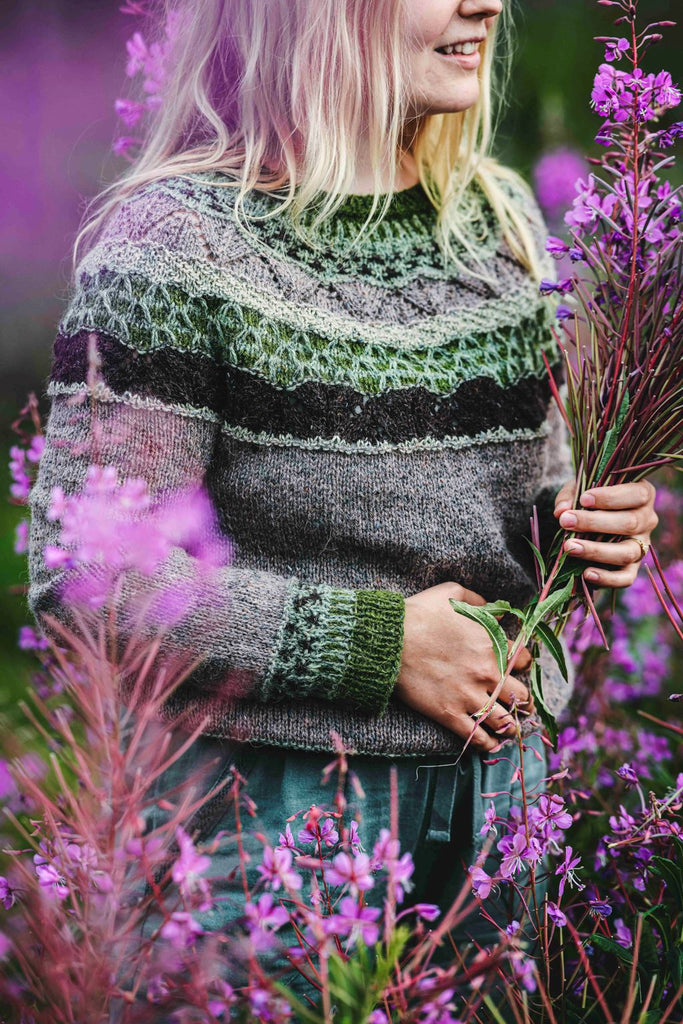
Nokko by Annika Konttaniem
I then started a Youtube channel, my knitting vlog, and also provided some tutorials for basic techniques used in yoke knitting. People responded well to my channel, and I thought this might be a good time to make my knitting book. I'd worked previously with an outstanding technical editor Heli Rajavaara on some of my past knitting patterns. Once I got her and my publisher on board, I knew this could be an enjoyable book to work on. However, I wanted the book to be different from traditional Icelandic knits. Though stranded knitting in Lettlopi is fun, I wanted to do more and use other yarns.
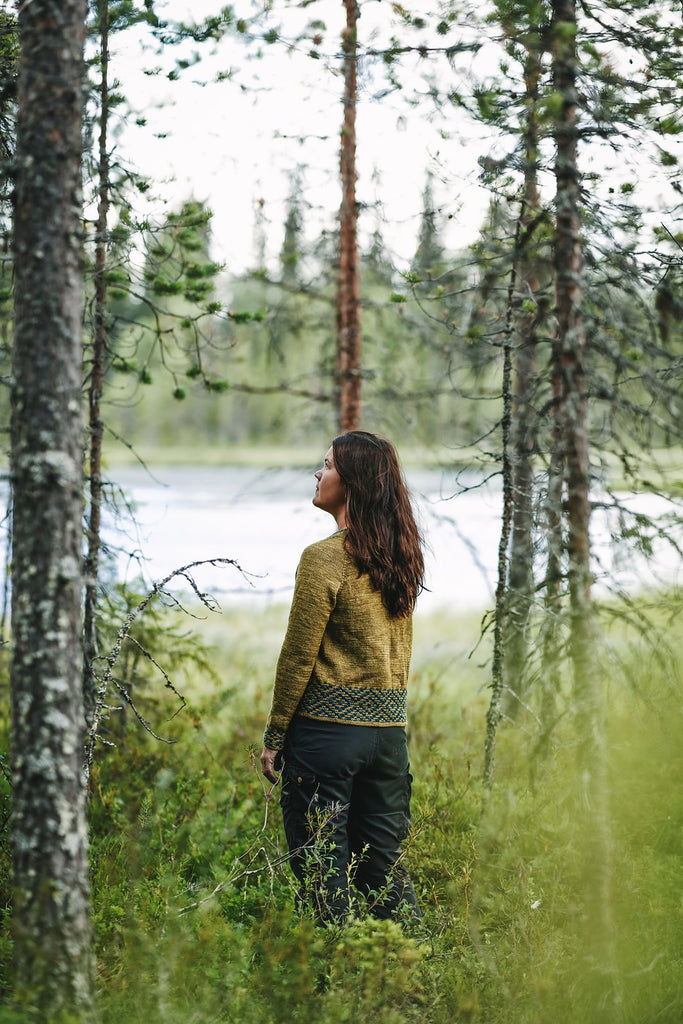
Soutu by Annika Konttaniemi
The book's narrative is based on seasonal changes in Lapland, and I wanted the patterns to be seamless and easy to modify for more advanced knitters. The patterns in the book were designed to have more advanced design features for all the newborn knitters of the pandemic to learn. The idea is that if you were to knit through all the patterns of the book, a very beginner knitter would get a good idea of how to do a basic version of more advanced knitting techniques like pockets, slits, stitch textures, lace and stranded knitting, steeking and button holes.
Additionally, I wanted the book to be educated on choosing colours for knitwear, so it also includes a substantial section on colour harmonies.
What is your design process, and how do you develop your knitting patterns?
I have a background in fine arts, so I approach knit design very similar to visual arts; I strive for a balance in colour, texture and composition. I often draw from my surroundings, so sometimes I make designs based on moments and places I've experienced in nature. Sometimes an animal or plant will be represented in the design. Only rarely do I make elaborate sketches or mood boards for my designs. I tend to visualize my design with my "inner eye", and then that vision somehow becomes strong enough for me to start knitting. For Arctic Knitting, I often designed with colour in mind, meaning I often aimed at precise colour representations, which also set some limits for my yarn choices.
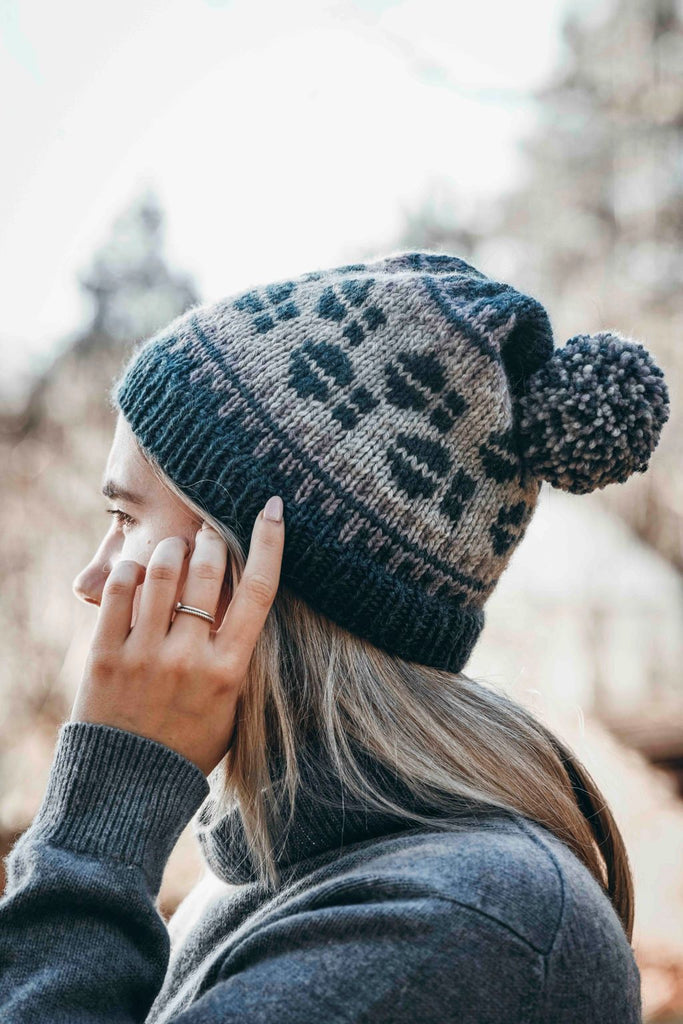
Jäljet by Annika Konttaniemi
How does your life in Lapland and culture influence your knitting designs?
We have a very outdoorsy lifestyle, so most of my knits are appropriate for outdoor activities. I've discovered the dirt repellency of rustic wool yarns is very practical because I still do art and ceramics. Wearability and comfort are very important to me as well. I've always enjoyed outdoor clothes and denim, so I often design sweaters that go well with jeans or outdoor clothing.
What is your favourite pattern from the Arctic Knitting book, and why?
Koiju is a special pattern to me because I designed it with my father-in-law in mind. My father-in-law fishes a lot, especially vendace. Vendace is a big part of our food culture in Lapland. Koiju is where he grew up, and we spend our summers nearby.

Koiju by Annika Konttaniemi
The yarn is Finnsheep wool in natural shades plus one watery blue shade. In this design, I chose a split-complementary colour harmony that symbolizes a natural rustic lifestyle, and the pattern simplifies the fish theme. (The black and silver vendace swim in big fish schools).
Can you share a tip or trick for knitters new to working with seamless yoke sweaters? Which design is a good pattern to start with?
Koiju is the perfect project to try top-down knitting for the first time. Vilske is a kids' sweater pattern and is an excellent project if you want a quick glimpse into how yoke sweaters are constructed when starting with the neckline.
For bottom-up knitting, Kaamos is an enjoyable design that can be made with pockets, and excluding sleeve and hem pattern makes it easier to knit.
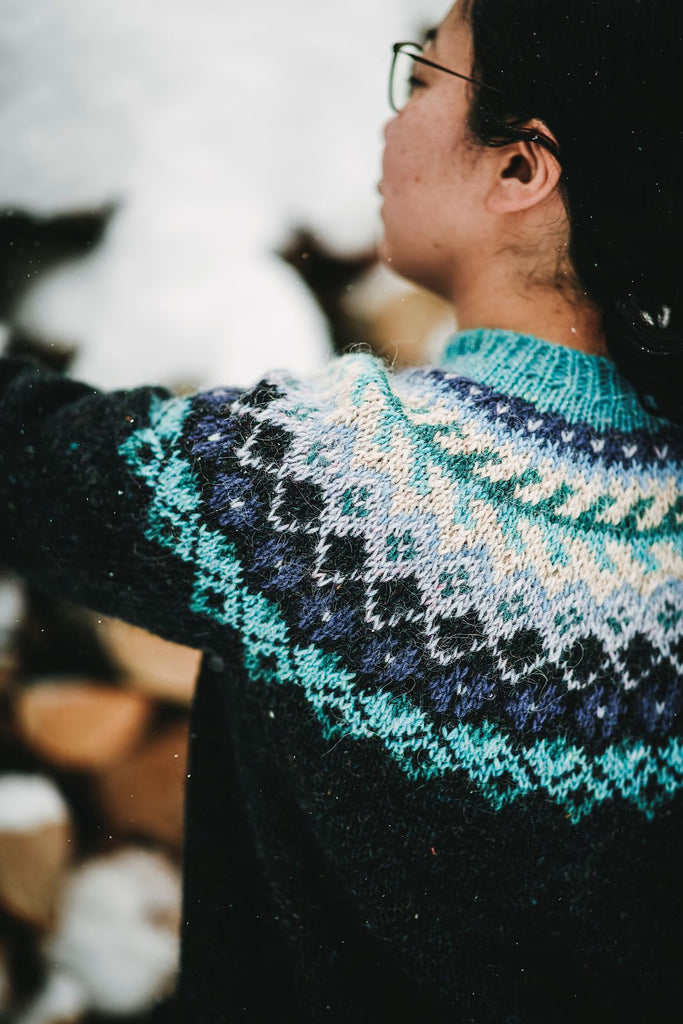
Kaamos by Annika Konttaniemi
The benefit of knitting from the top down is that the piece can easily be test-fitted along the way. Sleeves and hem will also be easier to make in a length that fits your body when coming from the top.
How do you choose the yarns and materials for your knitting projects, and what factors do you consider?
I almost solely use different animal wools because animal fibres are the best to wear up here and don't need to be washed so often. We toss our sweaters and wool blankets in the snow in the winter to clean! I often choose yarns by colour, and I look for very nuanced colour combinations, so yarns like Cascade 220, Lettlopi and Rowan Felted Tweed are fantastic in the range of colours they provide.
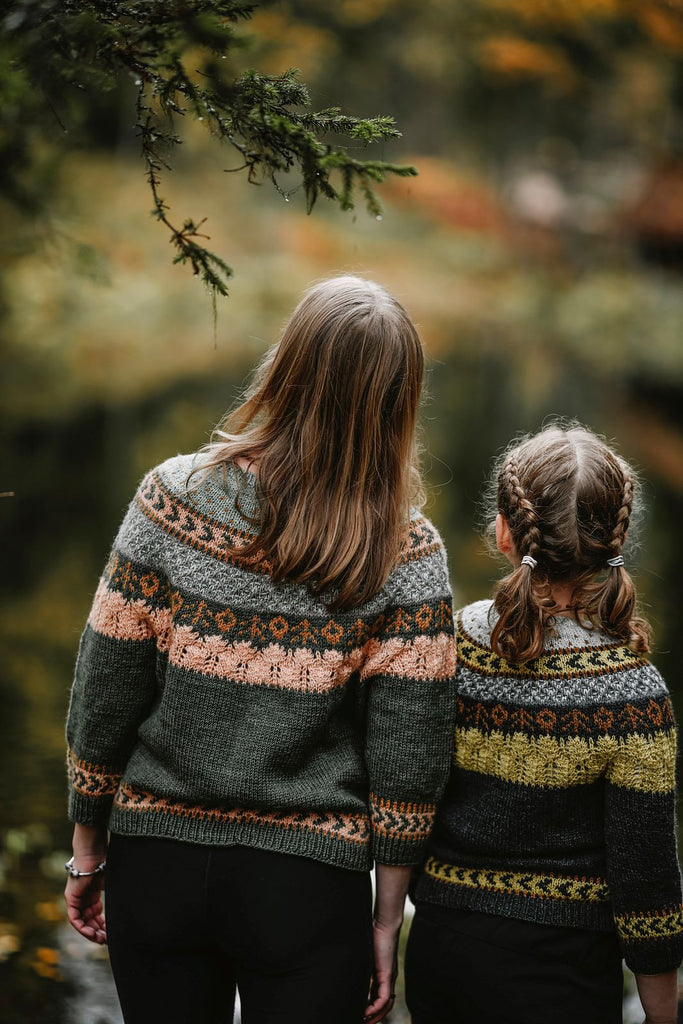
Kuura by Annika Konttaniemi
I love looking at hand-dyed and speckled yarns in merino, but I usually use mostly semi-solids in my knits. Lately, I've been drawn to tweed, but those are difficult to come across where I live, except online.
By now, I also have a pretty big stash of excellent left-over yarns at home, so I plan on designing more for scrap yarns in the future. I am also interested in making more designs for Finnsheep wool specifically.
What advice would you give someone wanting to start designing their knitting patterns?
If you haven't learnt about different constructions yet, find patterns with very different constructions. A knitted piece can be constructed in any number of ways, really, and so apart from stitches and colours, you can learn a lot about designing yourself by understanding construction.
Are there any other creative outlets or hobbies that you enjoy besides knitting?
Lately, I've been enjoying hand-building in ceramics a lot. It's so different from knitting and allows for more immediate self-expression. I also enjoy making quick watercolour sketches and have taken some illustration classes on Domestika.org.
I hope you enjoyed this interview with Annika Konttaniemi and our exploration of Arctic knitting. If you're feeling inspired to try out some of the patterns featured in her book, Artic Knitting, it is available to purchase now. Whether you're an experienced knitter or just starting out, these patterns offer a unique and beautiful way to explore the knitting traditions of Lapland. Thank you for joining us on this journey into the world of Arctic knitting!
Recent Articles
Subscribe
Sign up to get the latest on sales, new releases and more …



